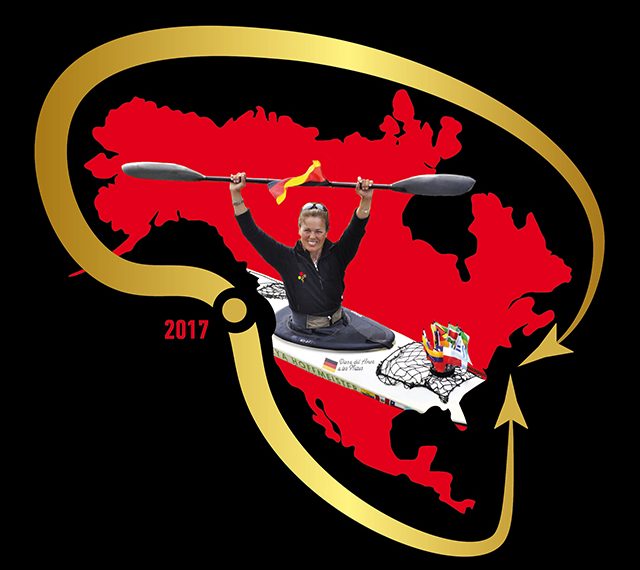Pos: here
Loc: Huasco
Acc: tent
Dist: 54,3 km
Start: 8:10 End: 19:00
Tomorrow:
Estimated landing: Corozal
Estimated starting time: Right after sunrise
Estimated landing time: Well before sunset
The small tide had lifted a bit over night, so launching over the rocks was no problem in still quite calm seas. Tidal range is here only about a meter, and the tidal current we really can’t feel. Sunrise is around 7 am, sunset at 7.30 pm.
It was quite windy all night, and the sea had created a long easy going swell where Peter and I enjoyed for a while to surf along with our great kayaks – despite the heavy load! They are just a pleasure to paddle, and the rudders work well (now…).
But as soon as the wind died down over lunch, I almost fell asleep while paddling, as the visibility was very low again all day and we just had crossed a small bay again. I was just thinking about what entertainment may happen now, as a Navy boat came up to us, and called a few non-understandable words on a megaphone from the distance! This was the first time they did that, instead of waving friendly and stopping by for a chat…instead, they stopped far behind us, possibly to report back home: “Mission accomplished, we found the kayakers!”, and then they headed back home again in full speed! Ok…but please don’t expect me to switch on my VHF radio for a small talk, as we keep the batteries understandably for emergency use.
We kept on paddling along, when an undefined small triangle fin was showing up for a while, pretending he was a shark…?
But then, in the early afternoon – out of nowhere, with no spout warning – a fat whale emerged just about 10 m in front of our kayaks! We were both startled and struck with awe, and this was Peter’s first whale! He dove down again, came up once more next to me, and then he was gone…just on turning around we heard and saw him a few times spouting! One other fellow was sitting deeper in the bay, where I also saw spouts. And I was already worried about if this is still whale season here? Sure I’d like to have Peter to see the full program soon…
The next past time were some German lessons for Peter, which came much easier for him than if I’d try to learn Danish, as he already speaks pretty well German!
Nearing Huasco, the headland at Punta Alcalde was quite a rough one, with a bunch of seals sitting high on top of a huge rock. Neat!
Way less neat to look at was the huge power plant at the headland before turning into the bay of Huasco. What an ugly building! It had three fat huge chimneys, one blowing thick white steam into the air. One long wall we couldn’t define what it was for was decorating probably a kilometer of land before the plant.
The paddle into the dead calm bay was a nice finish for a long paddling day, and the landing on the long sandy beach was easy.
A Navy car was already waiting for us, this time they were very welcome, as we needed to fill up fresh water. One officer was so nice to take our empty water bags plus our trash bag, and soon came back with a refill (for the water bags…). Thanks, guys!
Another officer came later, one of the guys who was on the boat today, and asked if he could also help with water and maybe shoppings – thanks! But we were already all set. Friendly guys here!


4 comments on “Wed 12/09-2012 Day 266”
The long “wall” is a stockpile of iron-concentrate pellets, waiting to be transferred by conveyor belt to the Guacolda Port and then -mainly- to Japan. Huasco´s Pellet Plant belongs to Compañía Minera del Pacífico, wich owns many iron-ore mines in the Serena – Vallenar area.
The view from space (google earth) of the long wall at the power plant looks as though it is a bunker or storage facility for coal and yes it is nearly a kilometer long.
Interesting post to read as usual Freya.You & Peter are putting up great distances, well done both of you. You mentioned how well the kayaks are performing, When you get the time I (& I’m sure others) would like to hear more of what the kayaks are like for this type of expedition paddling. What are the good points of them?
Thanks.
Comments are closed